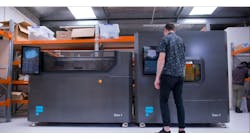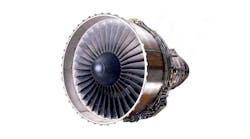Customized automated finishing addresses labor and liability costs for metalcasters.
Metalcasters worldwide have embraced the concept of automated machining operations in the past two years, investing in new operations because they see an opportunity to improve finished product quality and increase production volumes: “high throughput” has become the new catchphrase for foundries and diecasters to convey their advanced production capabilities. As such, any metalcaster aiming to increase throughput by adding machining capability will discover that the critical detail is not just machining, but automation
That’s the emphasis of equipment suppliers like ABB Robotics, which introduced a new medium-capacity, multipurpose robot recently. The IRB 2600 is an “optimized compact” design with a wide working range and a payload capacity up to 20 kg, so it can inhabit a workcell to pick and place castings for machining on a continuous and reliable basis. According to ABB the accuracy and speed it achieves will improve productivity by increasing output, speeding up cycles, and reducing scrap rates. It is capable of flexible mounting (floor, wall, ceiling) and a “Foundry Plus 2” protection option is available to shield it from heat and other occupational hazards.
Robots certainly address the first need in the pursuit of highthroughput — automation — but the design of the robot is only the first step. Integrating automation capability with casting cleaning and machining is custom work, and there are contractors that specialize in that sort of assignment. One of those engineering firms is Foundry Solutions & Design, which argues that customized automated finishing should be a goal for forward-thinking foundries because it addresses the most significant variable cost in metalcasting — labor — while improving finished part quality because of the consistency of the process. In this way, it enhances overall plant safety and reduces liability costs.
FS&D distinguishes between “hard” and “flexible” automation designs, the former being suited to high-volume foundries producing a discrete variety of products, and the latter suitable for foundries producing a changing volume and variety of castings. Between the two options lies the possibility of flexible automation cells, which foundries of all profiles may implement to minimize their investment costs and maximize their finishing opportunities. Cells can be designed with mechanized part handling and interchangeable tools, so reprogramming is the only step needed to alter a production process.
Another expert integrator is Vulcan Engineering, which emphasizes that insight to robotic capabilities is what delivers value in the design of automation cells. Capabilities like integrated technologies for robot guidance, sensory feedback and user/programmer interface make the current robot offerings more versatile and more “intelligent” than ever.
“Integrated force sensing” is a functionality that allows a robot to sense force and torque in all directions, for efficient material removal among other capabilities. In grinding operations, for example, force control allows a robot to maintain optimal normal force and feed force, and react intelligently to the forces encountered.
Vulcan’s FOXALL automated casting finishing system takes advantage of ABB’s “Force Control for Machining” system to reduce grinding cycle time by as much as 20%, while prolonging grinding wheel life.
There are purpose-built grinding and machining centers, too. Magna Electro Castings in India recently ordered a Maus SAM 600G grinding center with four-tool capability and an automated load/unload sequence timed at less than 4 seconds. Maus develops high-powered grinding and fettling machinery for iron and steel foundries of varying sizes, from jobbing operations to high-volume automotive plants, and capable of handling castings in a range of dimensions. Magna expects to install its Maus system in July as its latest effort to automate its production processes
A newly patented robotic machining system is available now from an Italian machine and robot designer, Soluzioni Industriali Robotizzate. It calls its new Module package “an original approach” for deburring, cutting, and finishing. It is a universal machining unit consisting of a rotating structure on an axis controlled by the robot that is able to manage four or more interchangeable processing stations that can be positioned in turn in the work area. It is available in standard configurations for foundry operations.









